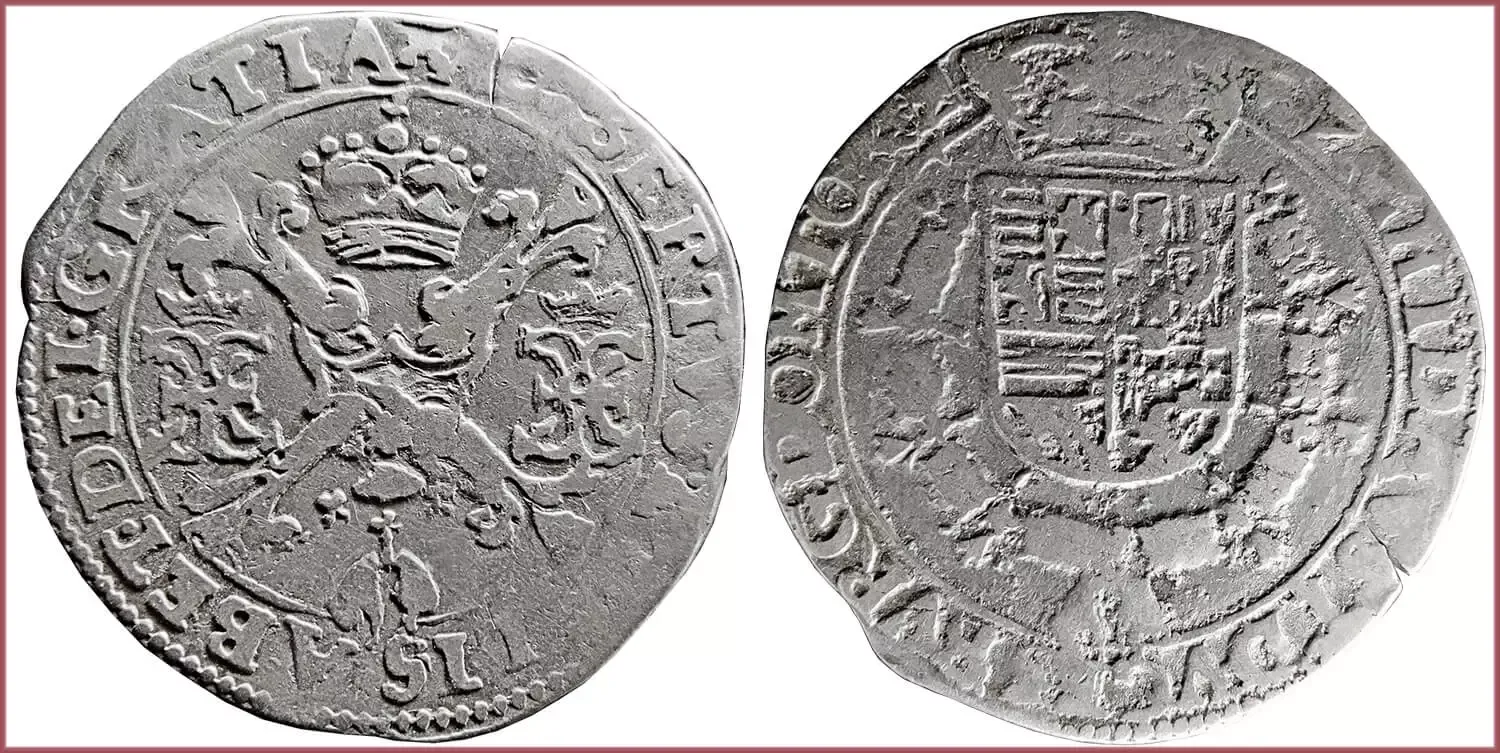PATAGON: COIN OF SPANISH NETHERLANDS
1/4 patagon, 1612-1619: Duchy of Brabant (Spanish Netherlands)
Ruler: Albert VII — Archduke of Austria and, jointly with his wife, Isabella Clara Eugenia, sovereign of the Habsburg Netherlands between 1598 and 1621.
ALBERTVS ET ELISABET DEI GRATIA: Albert and Isabella, by the Grace of God.
Crowned St. Andrew's cross (Burgundian X-cross or Cross of Burgundy — Spanish colonial, naval flag of the 16th-18th centuries) flanked by pair of crowned A-E monograms (Albertus and Elisabet).
ARCHIDVS AVST DVCES BVRG ET BRAB Z: Archduke of Austria, Duke of Burgundy and Brabant, Palatine of Zeeland.
Coat of arms of Archduke Albert VII of Austria surrounded by the Order of the Golden Fleece.
- Silver (0.875): 31 mm - 6.69 g
- Reference price: 27$
COIN PATAGON — WHERE & WHEN (coins catalog: by names & emitents)
- BELGIAN STATES (Duchy of Brabant, County of Flanders, County of Namur, Lordship of Tournai..., 17th-18th centuries): patagon = 48 stuiver
- FRANCE (County of Artois, County of Burgundy, 17th century): patagon = 48 patard
PATAGON as coin name.
Patagon or albertusdaalder — large silver coin of the Spanish Netherlands (mostly modern Belgium), issued during 1612-1711 (99 years in a row). In addition to the main denomination — 1 patagon, — smaller denominations (1/2 and 1/4 patagon, differing only in weight / size) were also issued. It is considered one of the independent types of thaler (or rather, daalder — "Dutch thaler").
The first patagons were produced in 1612 and were high-quality silver coins weighing 28.1 grams. The issuer was the Spanish (later Austrian) Netherlands, a possession of the Habsburg dynasty. Therefore, it was deliberately decided to release the coin partially inferior: due to the reduction in weight relative to the main imperial coin — the reichsthaler of the Holy Roman Empire (29.23 g).
There are several types of patagons: with an indication of the date (early varieties) and without it — later, undated patagons.
The obverse of the coin contained a crowned image of St. Andrew’s Cross (slanted Burgundian cross — Spanish colonial, naval flag in the 16th-18th centuries). The reverse was decorated with the coat of arms of Archduke of Austria Albert VII, the co-ruler of the Spanish Netherlands. His name, along with the name of his wife (Isabella Clara Eugenia), is mentioned in the legend of the early patagons.
Over the centuries of mass emission, patagons have spread significantly in the surrounding lands, especially in Central and Eastern Europe. As a result, to this day these coins are quite often found on the territory of Ukraine (mainly in the West). In Russia, it was not used as money — only as silver raw material for local coins.
The name patagon coin has nothing to do with Patagonia (as it might seem), — a geographical region in South America. According to the relevant Dutch article in Wikipedia (surprisingly, I could not find any other sources), albertusdaalders got the name patagon due to the large size of the coin. This feature made albertusdaalder similar to Patacon — ornamental coin-like round clay ornaments with a diameter of up to 15 cm, which were used to decorate holiday bread in the Netherlands during the 16th-19th centuries.
In addition, in the medieval chivalric novel "Primaleon" the giant character Patagon is mentioned.
If we consider the coin as albertusdaalder (sometimes — albertusthaler), then the name obviously indicates the initiator of the issue of the coin — Albert VII (Albert of Austria), who from 1598 together with his wife Isabella was the co-governor (governor or statthalter) of the Spanish Netherlands.

